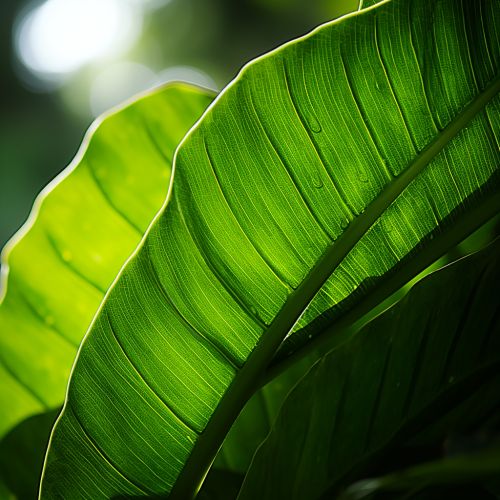Quantum Coherence in Photosynthetic Light Harvesting
Introduction
Quantum coherence in photosynthetic light harvesting refers to the phenomenon where quantum mechanical principles, specifically coherence, play a significant role in the process of energy transfer in photosynthetic organisms. This process, which is fundamental to life on Earth, involves the absorption of light by photosynthetic pigments, followed by the transfer of energy to the reaction centers where it is converted into chemical energy.


Quantum Mechanics and Photosynthesis
Quantum mechanics, a branch of physics that deals with phenomena on a very small scale, such as atoms and subatomic particles, has been found to be integral to understanding the process of photosynthesis. In particular, the principle of quantum coherence, which describes the ability of a quantum system to exist in multiple states simultaneously, has been identified as a key factor in the efficiency of energy transfer in photosynthesis.
Quantum Coherence in Energy Transfer
In photosynthetic organisms, light energy is captured by pigment molecules called chlorophylls and carotenoids. These pigments absorb photons of light, which excites their electrons to a higher energy state. The energy is then transferred through a network of pigment-protein complexes, ultimately reaching the reaction centers where it is used to drive the chemical reactions of photosynthesis.
This energy transfer process is incredibly efficient, with nearly all of the absorbed light energy being successfully transferred to the reaction centers. This efficiency has long puzzled scientists, as classical models of energy transfer would predict significant losses due to the random nature of the process.
However, recent research has shown that quantum coherence may play a significant role in this process. According to these studies, the energy transfer process in photosynthesis can be described as a quantum walk, a type of random walk that incorporates quantum mechanical effects. In a quantum walk, the energy exists in a superposition of states, allowing it to explore multiple pathways simultaneously. This increases the efficiency of the energy transfer, as the energy can bypass slower or less efficient pathways.
Experimental Evidence
The role of quantum coherence in photosynthetic light harvesting has been supported by a number of experimental studies. One of the most significant pieces of evidence comes from two-dimensional electronic spectroscopy studies on photosynthetic complexes. These studies have revealed quantum beats, or oscillations in the signal, that are indicative of quantum coherence.
In particular, studies on the Fenna-Matthews-Olson (FMO) complex, a pigment-protein complex in green sulfur bacteria, have shown evidence of long-lived quantum coherence. These results suggest that the energy transfer process in this complex is not purely classical, but instead involves quantum mechanical effects.
Implications and Future Research
The discovery of quantum coherence in photosynthetic light harvesting has significant implications for our understanding of photosynthesis and energy transfer processes in general. It suggests that quantum mechanical effects may be more widespread in biological systems than previously thought.
This research also has potential applications in the development of new technologies. For example, understanding the role of quantum coherence in photosynthesis could aid in the design of more efficient solar cells. By mimicking the quantum mechanical processes found in photosynthesis, it may be possible to create solar cells that can capture and transfer energy with a similar level of efficiency.
Future research in this area is likely to focus on further elucidating the role of quantum coherence in photosynthesis and exploring its potential applications. In particular, studies are needed to determine how widespread this phenomenon is among different photosynthetic organisms and to understand the precise mechanisms by which quantum coherence enhances energy transfer efficiency.
